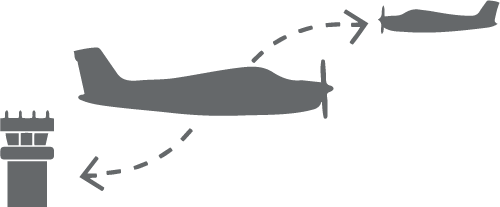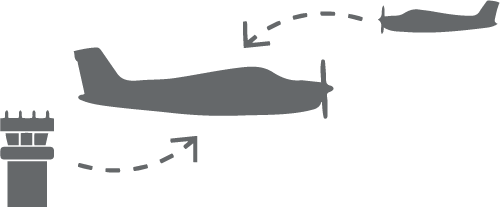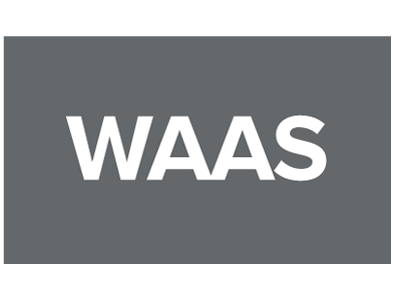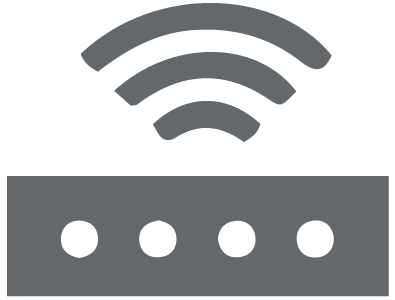What it means for aircraft operators
Countries around the world are implementing a more accurate way of tracking aircraft. Called Automatic Dependent Surveillance–Broadcast (ADS-B), the technology will eventually replace radar as the primary surveillance method for Air Traffic Control (ATC) monitoring and separation of aircraft worldwide.
The United States and other countries have published regulations mandating ADS-B on aircraft operating in their regions according to differing schedules. Some countries that don’t yet require the equipment have designated special routes and airspace to benefit those who voluntarily equip.
ADS-B allows equipped aircraft and ground vehicles to broadcast their identification, position, altitude and velocity to other aircraft and ATC. This is called ADS-B Out. Being able to receive this information is known as ADS-B In.
"ADS-B Out is an evolutionary step in communication between the aircraft and other airspace consumers. Current transponders enable ATC and other aircraft to know your aircraft's relative position and altitude. ADS-B adds important information to help project and prevent traffic conflicts by estimating intent," explained Jake Biggs, Textron Aviation's aftermarket engineering manager.
ADS-B advantages
- Increase capacity and efficiency of airspace
- Expand ATC surveillance into more areas
ADS-B Out

Broadcasts identification, position, altitude and velocity to other aircraft and ATC.
ADS-B In

For some aircraft, it receives broadcasted information, including aircraft positioning, weather data and pilot reports.
"ADS-B requires extremely accurate, three-dimensional position reporting to reduce reliance on ground-based radar to allow tighter separation standards. The advantage to all airspace users is an extremely accurate understanding of traffic and where it is going," Biggs said.
 Service professionals suggest scheduling your ADS-B Out upgrade years in advance to take advantage of prime scheduling flexibility and supply pricing. Contact Textron Aviation service experts to plan your transition.
Service professionals suggest scheduling your ADS-B Out upgrade years in advance to take advantage of prime scheduling flexibility and supply pricing. Contact Textron Aviation service experts to plan your transition.
How does it work?
In the United States, ADS-B-equipped aircraft and vehicles exchange information on one of two frequencies: 978 MHz or 1090 MHz. Mode A/C and S transponders, as well as Traffic Collision and Avoidance Systems (TCAS), use 1090 MHz. ADS-B extends the message elements of Mode S, adding information about the aircraft and its position. This extended squitter is known as 1090ES. An international technical advisory committee chose 1090ES as the worldwide standard for ADS-B.
"The FAA has been systematically upgrading and deploying the ground networks. In the United States, there are two methods for achieving ADS-B Out. One is using the next generation of transponders operating on the 1090 MHz band. The other is using a new technology called Universal Access Transceiver (UAT)," Biggs said.
UAT operate on 978 MHz and apply to aircraft that fly below 18,000 feet in the United States.
"UAT is only allowed for operations below 18,000 feet. UAT provides free services, such as graphical weather and traffic information for ADS-B In-equipped aircraft. It does not replace the requirement for transponders. The rest of the world is planning for ADS-B to use the 1090 MHz link."
"System deployments were created around an earlier set of requirements–RTCA DO-260A. Aircraft that are equipped for these ADS-B standards will need to update to a newer standard known as RTCA DO-260B to be compliant with mandates in the U.S. and Europe," Biggs said.
The European ADS-B Out mandate requires new aircraft with a maximum takeoff weight of 5,700 kg (12,500 pounds) or greater or a maximum cruise speed of more than 250 knots enter service with ADS-B Out capability as of Jan. 8, 2016, and that existing aircraft meeting these criteria be equipped as of June 7, 2020.
In the United States, all aircraft must be equipped by Jan. 1, 2020. All new Beechcraft® and Cessna® aircraft will deliver with ADS-B Out in compliance with the mandated European deadline.
What equipment do I need?
Depending on the vintage of your aircraft, the equipment can be simple or complex. The good news is that you may have some elements already on board your aircraft.
"ADS-B will require at least one Wide Area Augmentation System (WAAS)-capable GPS receiver connected directly to the transponders. The transponders will need to be upgraded to be compliant. If your aircraft is not already compliant with the European requirement for Enhanced Surveillance, then these are the additional steps you need to take," Biggs said.
What you need

WAAS-capable
GPS receiver
Upgraded transponders
Capability to input flight ID
Software and hardware upgrades for data
Where is it required?

- 1. Australia
Dec. 12, 2013, at or above FL 290.
- 2. Canada
If requesting operational benefit.
- 3. China (Taipei)
Required when flying over routes B576 or B591 at or above FL 290 within the Taipei Flight Information Region on and after Dec. 12, 2013.
- 4. China (Sanya)
Required when flying over performance-based navigation routes L642 or M771 at or above FL 290 within the Sanya FIR on and after Dec. 12, 2013.
- 5. Europe
Requires equipage in aircraft over 5,700 kg (12,500 lbs.) MTOW or a maximum cruise of more than 250 knots by June 8, 2016, for new aircraft and June 7, 2020, for retrofit.
- 6. Fiji
Only required for Fiji-registered aircraft operating in controlled airspace.
- 7. Hong Kong
Required when flying over performance-based navigation routes L642 or M771 at or above FL290 while within the Hong Kong FIR on and after Dec. 12, 2013, and when flying within the entire Hong Kong FIR at or above FL 290 on or after Dec. 31, 2014.
- 8. Singapore
Required when flying on ATS routes N891, M753, L642, M771, L644 and N892 at FL 290 and above within the Singapore FIR on and after Dec. 12, 2013.
- 9. United States
Requires most aircraft to be equipped with some form of ADS-B Out by Jan. 1, 2020.
- 10. Vietnam
Required when flying over ATS routes L625, M771, N892, L642, M765, M768, N500 and L628 at or above FL 290 within the Ho Chi Minh FIR on and after Dec. 12, 2013.
"ADS-B will require at least one Wide Area Augmentation System-capable GPS receiver connected directly to the transponders. The transponders will need to be upgraded to be compliant. If your aircraft is not already compliant with the European requirement for Enhanced Surveillance, then there are additional steps you need to take.”Jake Biggs, Textron Aviation’s aftermarket engineering manager
"You will need to upgrade the avionics for that standard as a prerequisite. That will require upgrades to control heads and data routing hardware and software. The level of integration of the avionics on some aircraft platforms almost makes discrete solutions impractical. This means Rockwell Collins aircraft will generally need a solution from Rockwell Collins. The same is true of Garmin and Honeywell. Contact your Textron Aviation Service representative to discuss your requirements and to get on the schedule early. It’s best to schedule this with a significant maintenance event, due to the necessary wiring changes, which may need to run the full length of the aircraft depending on the configuration of the particular aircraft in question," Biggs said.
Videos and stories contained in this site may contain information that while accurate at the time of publication, has since been updated. Please connect with a representative for any questions.